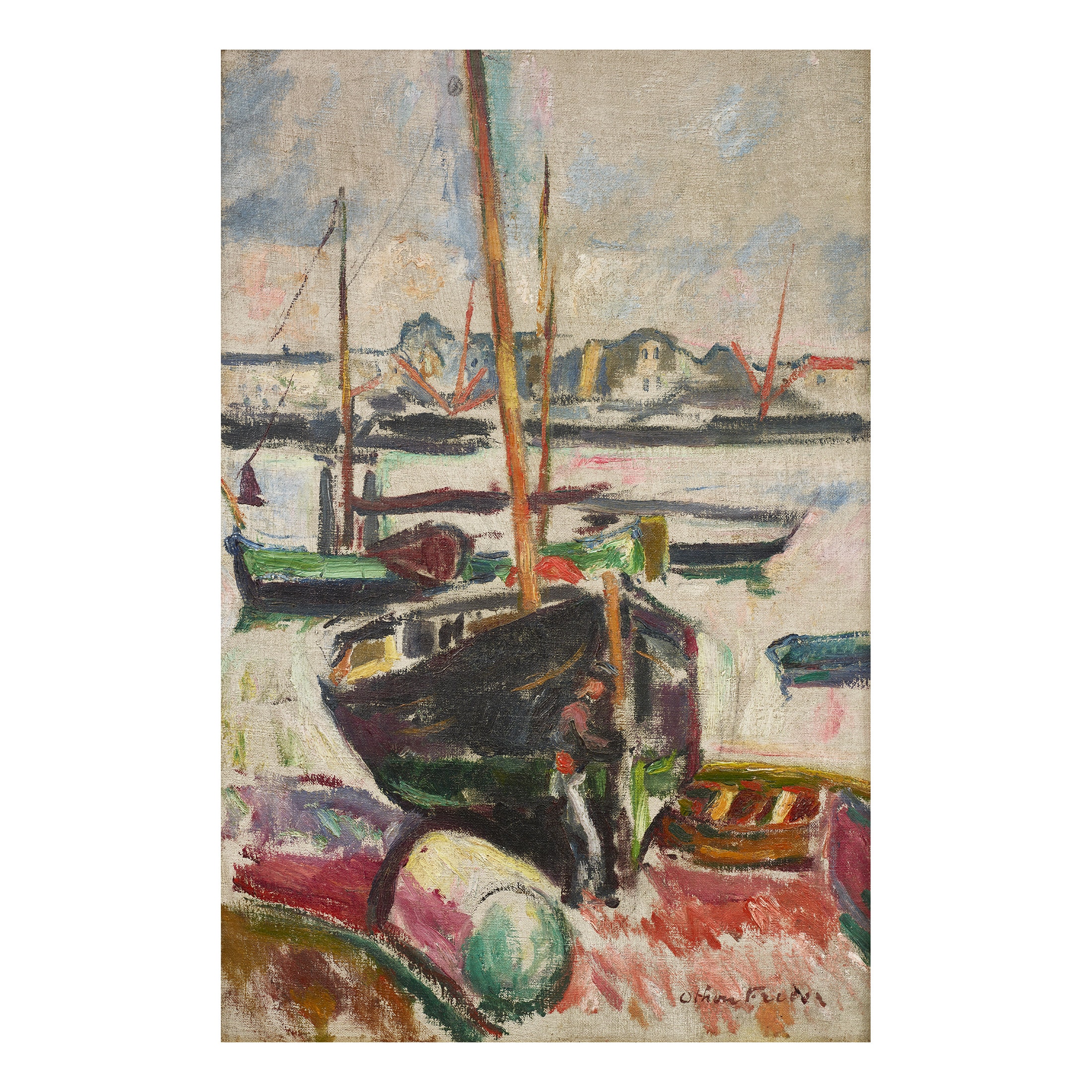Œuvres
Biographie
1879–1949
 Born in Le Havre in 1879, in a family of shipbuilders and sea captains, Friesz was taught at the local ‘École Municipale des Beaux-Arts’ by the classical painter Charles Lhuillier. Here Friesz met Georges Braque and Raoul Dufy, who became a close friend. Having obtained a scholarship, Friesz enrolled at the École des Beaux-Arts in Paris in 1897. Like many of his friends, Friesz preferred to learn freely from the masterworks hanging in the Louvre museum. In 1905 Friesz exhibited at the ‘Salon d’Automne’. His works were not exhibited at the infamous Room VII which became known as the ‘Cage aux fauves’ but did show the flat application of colour combined with a nervous handling of the drawing, two hallmarks of the new revolutionary style, known as Fauvism.
Born in Le Havre in 1879, in a family of shipbuilders and sea captains, Friesz was taught at the local ‘École Municipale des Beaux-Arts’ by the classical painter Charles Lhuillier. Here Friesz met Georges Braque and Raoul Dufy, who became a close friend. Having obtained a scholarship, Friesz enrolled at the École des Beaux-Arts in Paris in 1897. Like many of his friends, Friesz preferred to learn freely from the masterworks hanging in the Louvre museum. In 1905 Friesz exhibited at the ‘Salon d’Automne’. His works were not exhibited at the infamous Room VII which became known as the ‘Cage aux fauves’ but did show the flat application of colour combined with a nervous handling of the drawing, two hallmarks of the new revolutionary style, known as Fauvism.
Friesz’ Fauve expression resembled that of Henri Matisse and André Derain, but also displayed an exuberant drawing style as can be witnessed in the 1905 painting entitled ‘La Ciotat’. The summer of 1906 Friesz spent with Georges Braque, travelling to Antwerp before visiting l’Estaque and La Ciotat in the South of France, where the two friends worked on the same subjects. Whereas Braque moved towards Cubism, Friesz adhered to the Naturalism of Paul Cézanne, which he rendered in intense colours of highly contrasting hues, applied with vigorous Fauve brushwork. His compositions showed solidity of volume and a distinct separation of planes. Thus, Friesz became representative of a style known as ‘néo-cézannisme’.
Friesz’ travels through Germany, Belgium, Italy, Portugal and the South of France were reflected in his choice of subject matter.
In 1912, Friesz opened a teaching studio in Paris. In 1913, he exhibited at the New York Armory Show, before being mobilised in 1914. Being wounded in 1915, Friesz was assigned a position in the Aeronautics service in Paris. Following the Great War, Friesz lived between Paris and his native Normandy. His painting became increasingly naturalistic and sensual.
During the inter-bellum, Friesz continued to explore his classical style to express his beloved subjects of the landscape, the female nude, still-life, portraits and floral arrangements. Friesz was also active in the decorative arts of illustration, ceramics, tapestry cartoons and wall painting. Friesz passed away in Paris in 1949.


